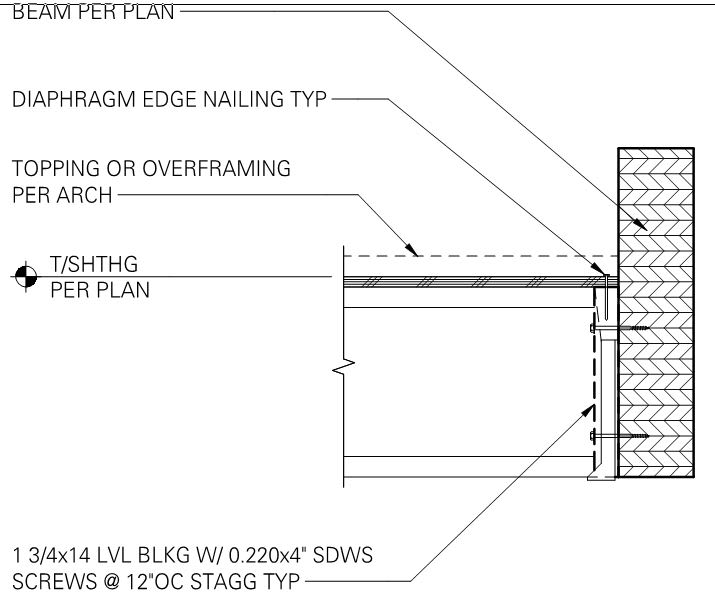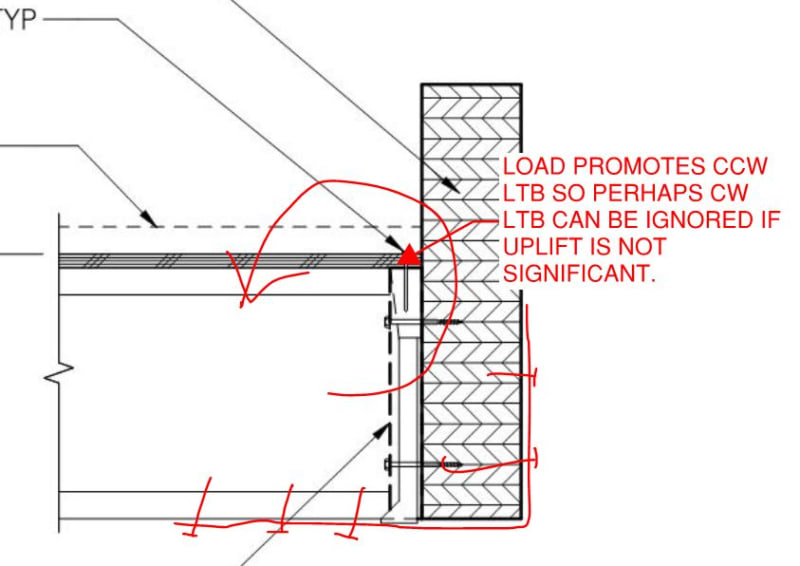Hi folks, I've got a wood-framed project where an Architect wants a clean uniform soffit, so we're being asked to up-set some wood beams, leaving their top flange unbraced.
14" deep I-joist framing hangered to beams typically, bottom flush with beams. I'm fairly confident that a small amount of up-set will be just fine (say an 18" deep GLB), but in one case we require a 36" deep GLB, and we only have framing on one side.
Assuming the beam is braced, a 5 1/8" x 36" deep GLB works. Unbraced and it's at about 185% stress. Of course, this one is up-set into a 2x6 parapet wall, so the preference is to avoid going with a wider beam for now.
Thoughts on how to justify LTB? Perhaps a few tension ties to the joists along the length would restrain any lateral translation at some discrete points?
My default position here is that the beam needs to work assuming completely un-braced, and I have been unable to find much guidance on up-set wood beams in my searching.
(Blocking is shown but that is probably going to be a ledger rather than blocking)

Tension ties - single? double to give a bit of moment/twist resistance?

14" deep I-joist framing hangered to beams typically, bottom flush with beams. I'm fairly confident that a small amount of up-set will be just fine (say an 18" deep GLB), but in one case we require a 36" deep GLB, and we only have framing on one side.
Assuming the beam is braced, a 5 1/8" x 36" deep GLB works. Unbraced and it's at about 185% stress. Of course, this one is up-set into a 2x6 parapet wall, so the preference is to avoid going with a wider beam for now.
Thoughts on how to justify LTB? Perhaps a few tension ties to the joists along the length would restrain any lateral translation at some discrete points?
My default position here is that the beam needs to work assuming completely un-braced, and I have been unable to find much guidance on up-set wood beams in my searching.
(Blocking is shown but that is probably going to be a ledger rather than blocking)

Tension ties - single? double to give a bit of moment/twist resistance?


